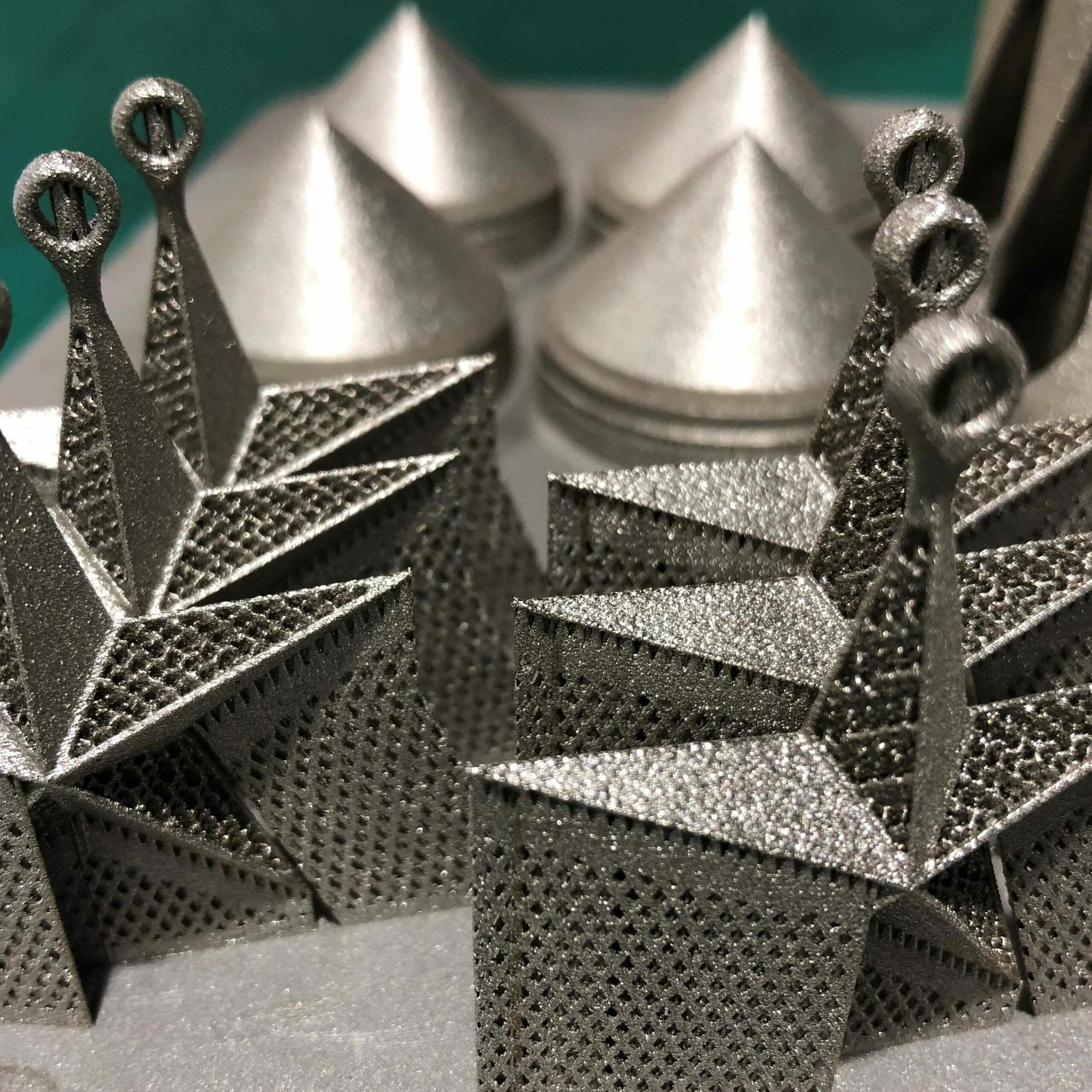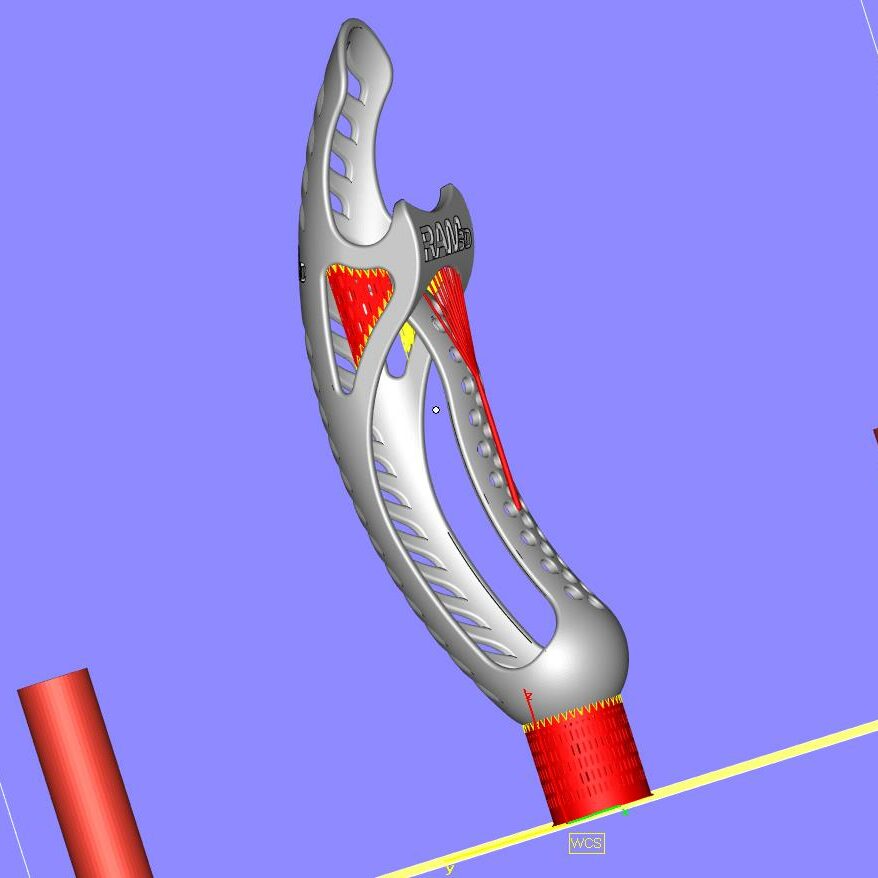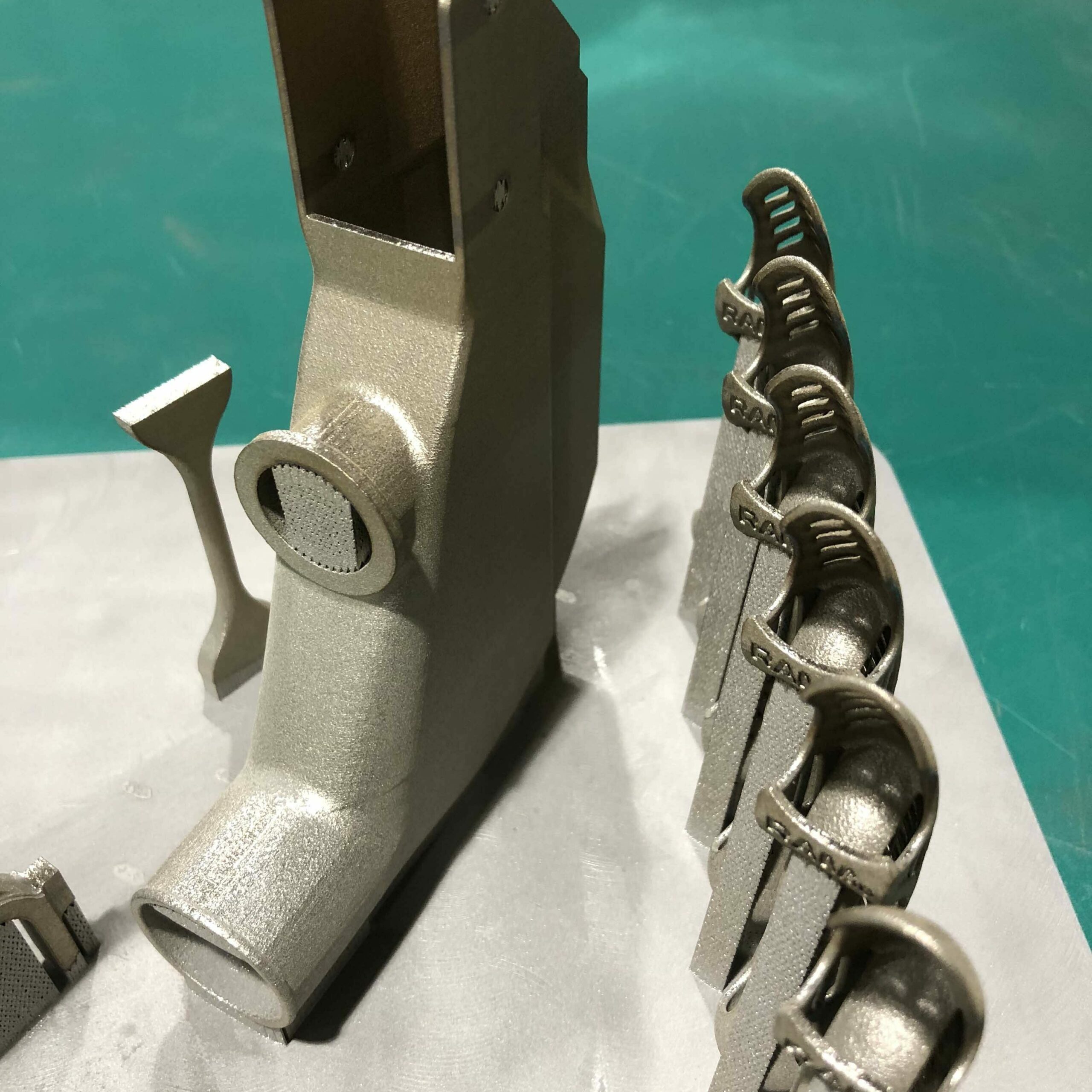Every single part we 3D print requires supporting to the build plate. While some will only require minimal support where the part meets the build plate, others require significantly more, with some parts using more support mass than the actual part itself. With support contributing to the cost of the build, careful consideration of the “buildability” of the part during the design stage can greatly reduce the cost and finish of the part.
Features and shape are taken into account to determine the best build orientation of the part. From here we add the support to the build plate and any of the down facing surfaces, the unsupported build angle can vary between materials but 45° is generally a safe angle.
Once supports are in place, we determine if the support is holding a shape or supporting an overhang. In cases where there are high stresses or sudden changes in part thickness, we will often use solid props to try keep the parts from moving. When the supports job has been determined, we can then make changes to the support density and contact points to suit its purpose. Other considerations to make, while supporting the part, is the ability to remove the support and if the support affects the finished look of the part. Where this is the case, support will need to be manipulated to land away from the part where access is better for removal.



